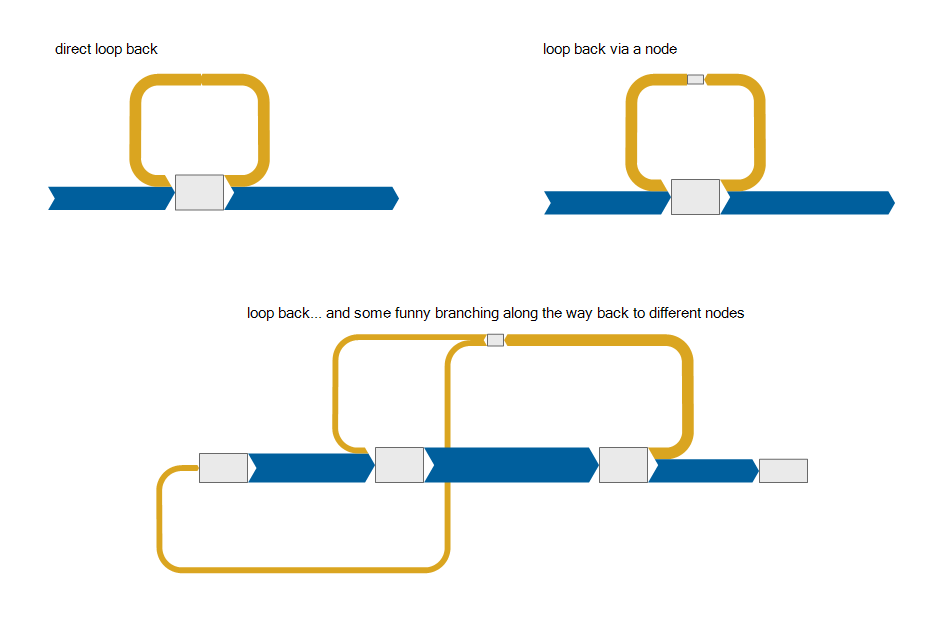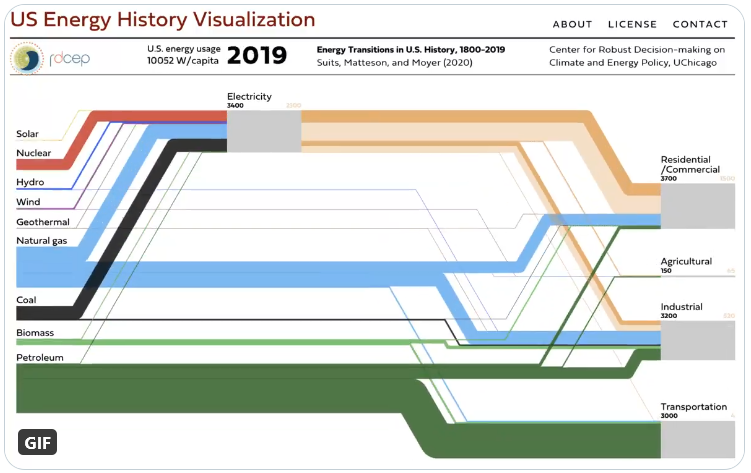My previous post on circular links got a number of responses. Indeed it seems as if drawing loopbacks (as I prefer to call them) is one of the tougher challenges in Sankey diagrams.
- Loops back to the same node are typically not required in relationship diagrams (bands depicting relationship between categories, see here), but they may be necessary if you want depict actual physical flows (e.g. recycling of material)
- Direct loops back, where the output of a process leads directly back to the same node, are not very common (one example can be seen here, called “functional recycling”). There could be in reality a node along the way back (e.g. a pump that pumps cooling water cycling the process). If you have a node in the loopback, then the input and output side are flipped.
- Loops can “go back via several nodes, they may even branch on the way back” like in the example below

If you take a left-to-right column oriented approach when setting up the diagram working with tabulated data as the source (sth like “source”: “process3”, “target”: “process8”, “value”: 20) then you have to consider the column depth to identify whether you have a back loop. All sorts of routing issues for the arrow come up and you need to create room to not produce overlaps. Drawing the Sankey diagram manually (like I did i the figure above) rather than programmatically gives more freedom in that respect.
